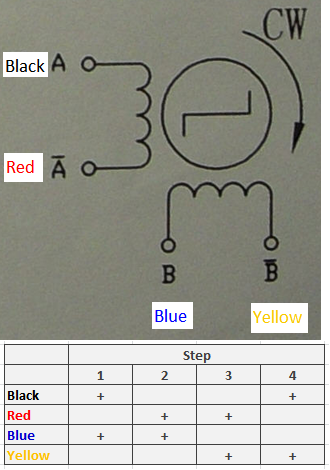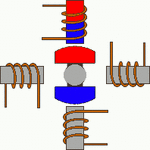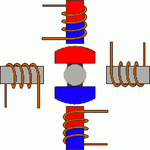bobsun
Full Member level 2
Hi,
I would like to ask a question on stepper motor.

I have recently bought a new permanent magnet stepper motor. According to its datasheet, it requires two poles to be driven simultaneously to rotate.
I was not able to figure out its internal magnet and electric pole structure. Could anyone infer it out?
Bob
I would like to ask a question on stepper motor.

I have recently bought a new permanent magnet stepper motor. According to its datasheet, it requires two poles to be driven simultaneously to rotate.
I was not able to figure out its internal magnet and electric pole structure. Could anyone infer it out?
Bob

